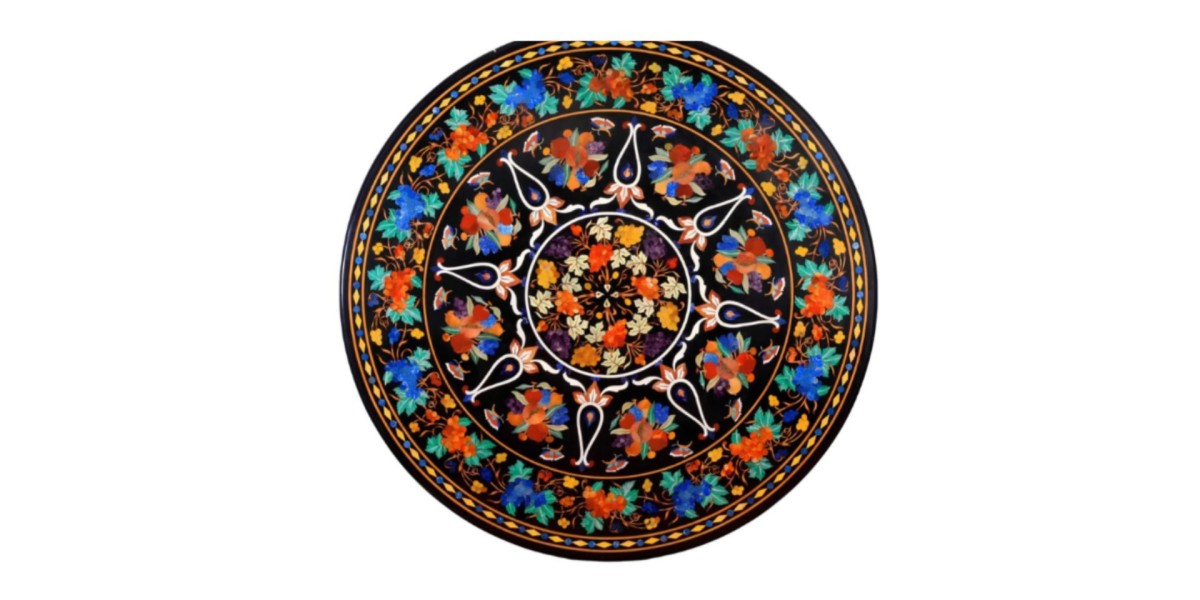Inlay dining tables are more than just functional pieces of furniture; they are masterpieces that showcase the intricate artistry and rich cultural heritage of woodworking. The term "inlay" refers to the technique of embedding contrasting materials—such as wood, bone, metal, or resin—into a base material to create decorative patterns or images. This method has been employed for centuries to produce furniture that is both beautiful and durable.
A Brief History of Inlay Work
The origins of inlay work can be traced back to ancient civilizations. In China, during the Warring States period (403–221 BC), artisans decorated vessels with gold and silver inlays, demonstrating early mastery of the technique . In Europe, the French cabinetmaker André-Charles Boulle (1642–1732) became renowned for his elaborate inlay work, combining tortoiseshell, brass, and pewter into ebony to create opulent furniture pieces .
In India, the Mysore region is famous for its rosewood inlay work, where artisans insert pieces of contrasting materials like ivory, mother-of-pearl, and sandalwood into rosewood to form intricate designs. This craft has been recognized with a Geographical Indication tag from the Government of India, highlighting its cultural significance .
Materials Used in Inlay Dining Tables
The choice of materials for inlay work significantly impacts the aesthetic and durability of the dining table. Common materials include:
Wood: Different types of wood, such as rosewood, walnut, and teak, serve as the base for inlay work. These woods are chosen for their grain patterns and durability.
Bone: Often used in Indian furniture, bone inlay involves embedding pieces of bone into the wood to create detailed patterns.
Resin: Colored resins can be used to fill inlays, allowing for vibrant designs and patterns.
Metal: Brass, copper, and silver inlays add a touch of luxury and are often used in traditional European furniture.
Stone: Materials like turquoise or lapis lazuli are sometimes inlaid into wooden surfaces to create striking contrasts.
Design Patterns in Inlay Dining Tables
Inlay work allows for a wide range of design possibilities, from geometric patterns to intricate floral motifs. Some popular design styles include:
Chevron Patterns: V-shaped patterns that create a sense of movement and are often used in modern designs.
Floral Motifs: Delicate flower designs that add a touch of elegance and are common in traditional Indian furniture.
Geometric Shapes: Symmetrical designs that offer a contemporary look and are popular in minimalist interiors.
Nature-Inspired Themes: Designs that incorporate elements like leaves, birds, and animals, reflecting natural beauty.
Crafting an Inlay Dining Table
The process of creating an inlay dining table is meticulous and requires skilled craftsmanship. The general steps include:
Designing the Pattern: Artisans begin by sketching the desired design onto the wood surface.
Preparing the Base: The wood is carefully sanded and treated to ensure a smooth surface for inlaying.
Cutting the Inlays: Pieces of the chosen inlay material are cut to fit the design.
Inserting the Inlays: The inlay pieces are meticulously placed into the prepared recesses on the wood surface.
Finishing Touches: The entire table is polished to enhance the natural beauty of the wood and inlays.
Caring for Inlay Dining Tables
To maintain the beauty and longevity of an inlay dining table, proper care is essential:
Regular Cleaning: Dust the table regularly using a soft cloth to prevent buildup.
Avoid Direct Sunlight: Prolonged exposure to sunlight can cause fading of the inlay materials.
Use Coasters and Mats: Protect the surface from heat and moisture by using coasters and placemats.
Polishing: Occasionally polish the table with a suitable wood polish to maintain its shine.
Professional Maintenance: For deep cleaning or repairs, consult a professional experienced in handling inlay furniture.
Conclusion
Inlay dining tables are a testament to the rich cultural heritage and exceptional craftsmanship that have been passed down through generations. Whether crafted from the rosewood of Mysore or the walnut of Europe, these tables serve as functional pieces of art that enhance any dining space. By understanding the history, materials, and care involved in inlay work, one can truly appreciate the value and beauty of these timeless creations.








